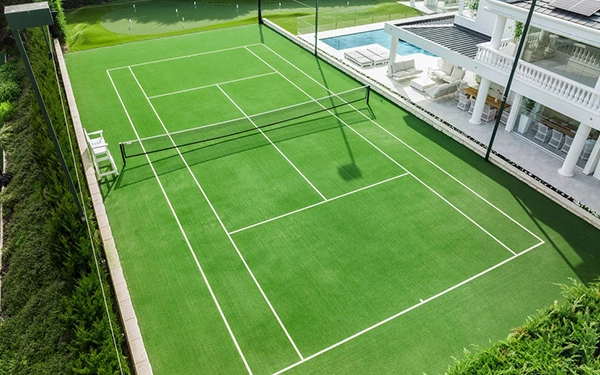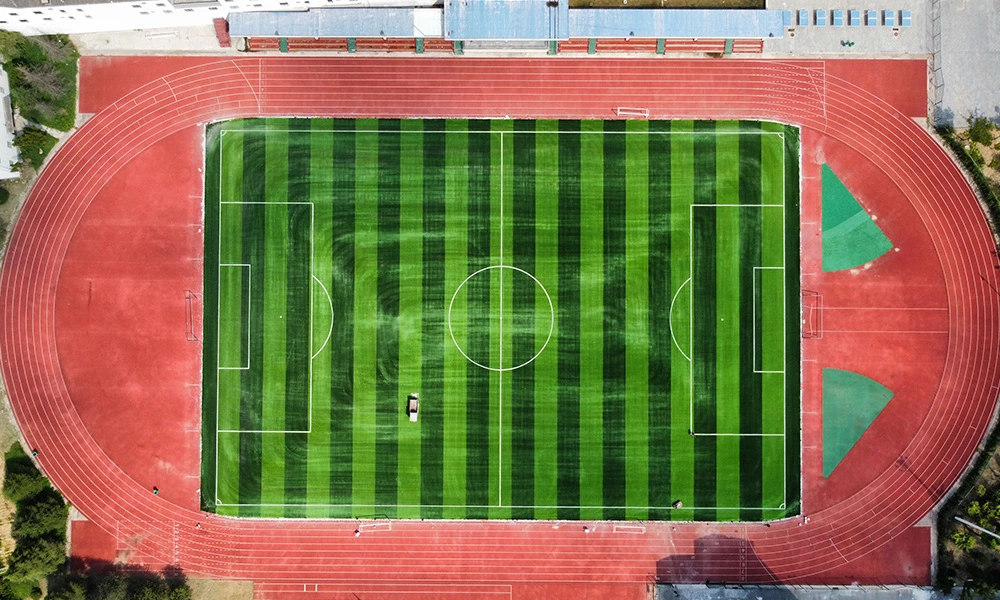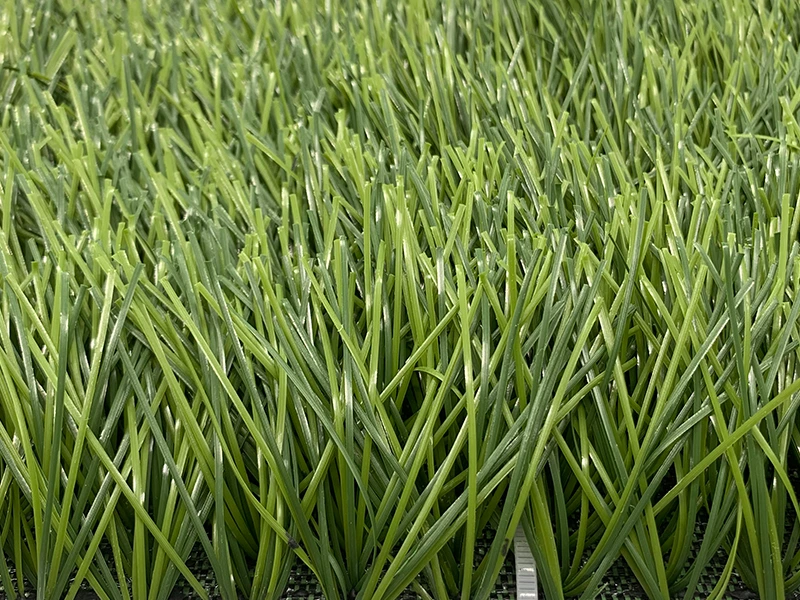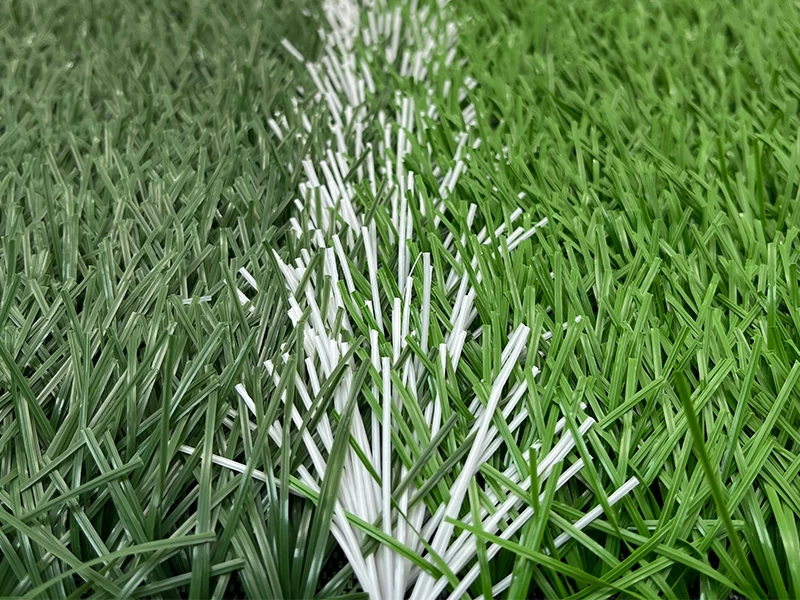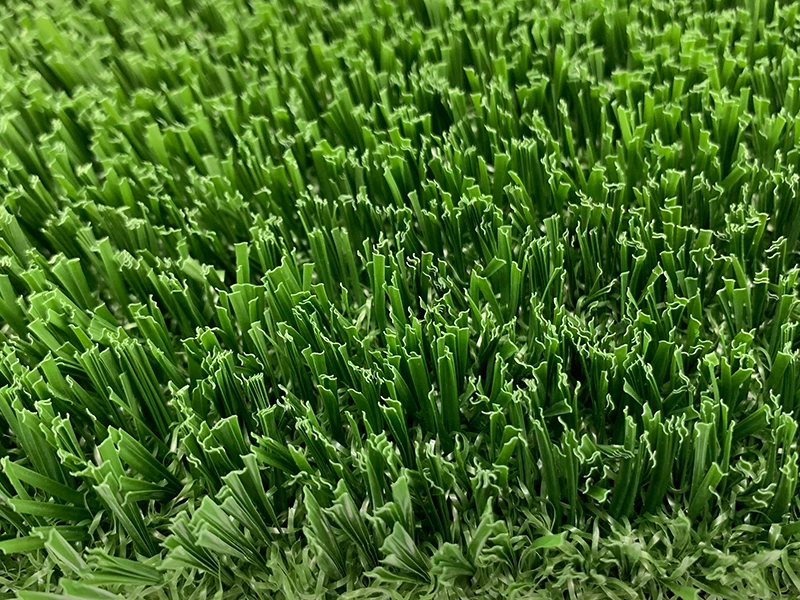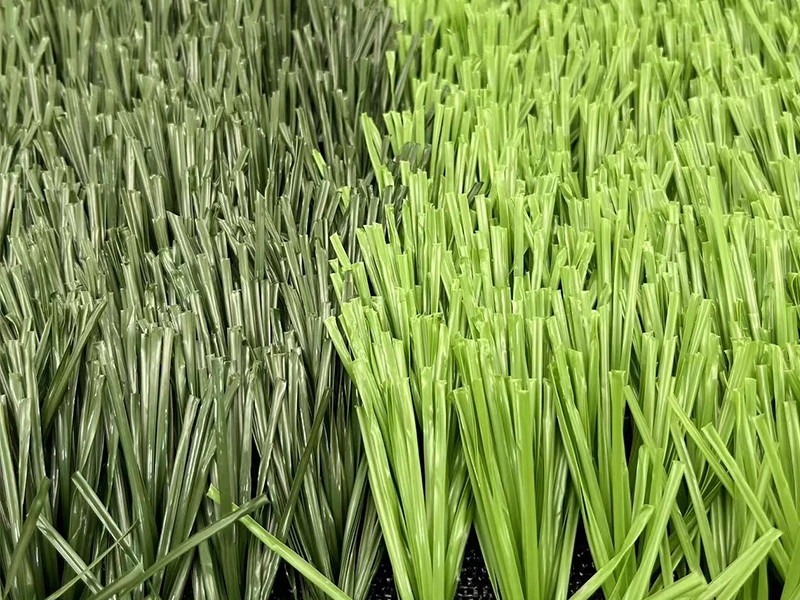What is an artificial turf tennis court? Its advantage?
What is artificial grass tennis court?
Artificial grass tennis court is an imitation of natural grass court. Its structure is a bit like carpet, except that the bottom layer is nylon woven fabric, and bundles of nylon short fibers are planted on it. In order to keep the fibers upright, fine sand is used as filler between the fibers. This kind of court requires a flat and solid base with a good drainage structure. In addition, because its white boundary is directly spliced with the surrounding court, it eliminates many maintenance troubles such as marking, making it an all-weather court. The maintainer only needs to comb and tidy it up frequently and add fine sand in time.
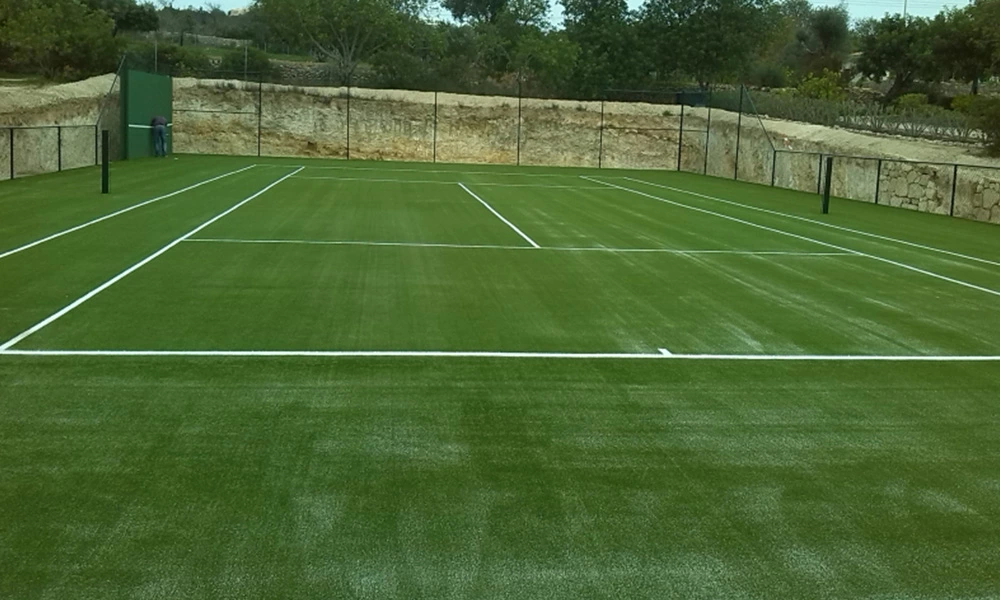
UNIGRASS tennis grass parameters
1. Height 12MM tennis grass
Height: 12mm
Number of needles: 30
Density: 63,000 needles/square meter
Weight: 8000D
Bottom: PP+NET+SBR
Row spacing: 3/16 inch
Advantages:
This tennis grass has high density and short pile, providing a uniform field surface, fast and stable ball speed, suitable for high-performance competition venues. The bottom structure is strong and the drainage performance is excellent, ensuring all-weather use.
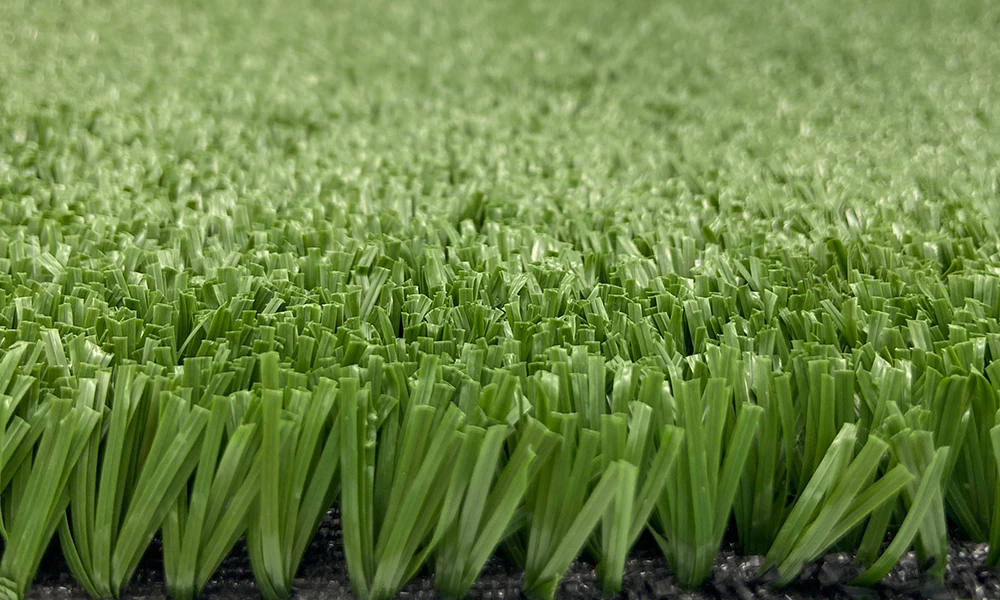
2. Height 15MM tennis grass
Height: 15mm
Number of needles: 25
Density: 52,500 needles/square meter
Weight: 8000D
Bottom: PP+NET+SBR
Row spacing: 3/16 inch
Advantages:
This tennis grass has a slightly higher pile design, which brings a more comfortable foot feel and a certain buffering effect, suitable for training venues or amateurs. It is durable, reduces maintenance costs, and adapts to various weather conditions.
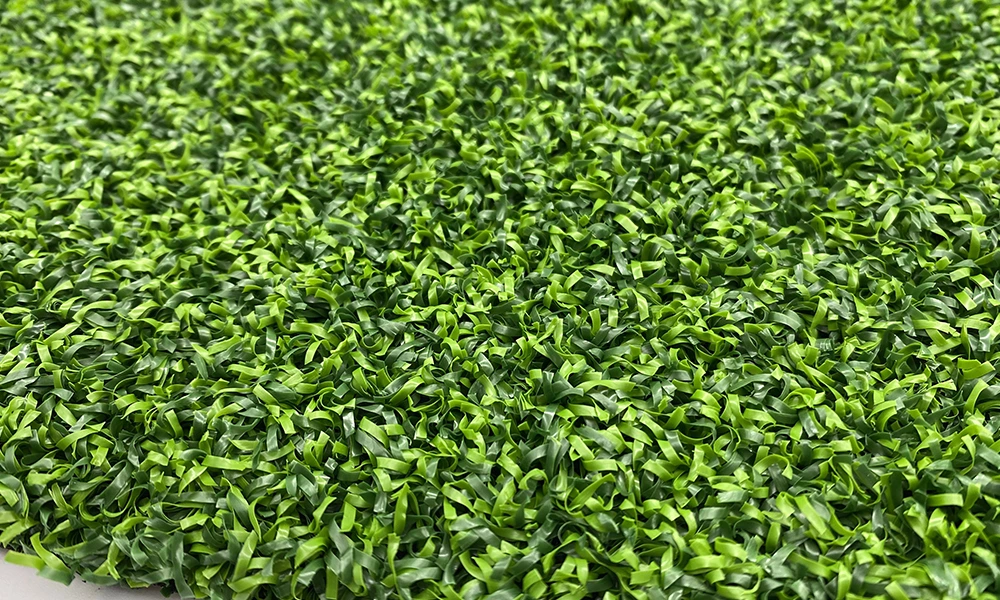
Both turfs are made of durable materials, are environmentally friendly and high-performance, and can meet the needs of different types of tennis courts.
Features of artificial grass tennis court:
Artificial grass tennis court is more conducive to offensive tennis. Artificial grass tennis court has less friction when the ball lands and rebounds quickly. It is more conducive to the performance of offensive players. Serve and volley, fast attack is the magic weapon for winning, the game is fast-paced, and the audience is also satisfied.
Unique material advantages of artificial grass tennis courts
Top-grade artificial fiber, no sand filling; has excellent sports protection performance, even if you accidentally fall, the soft surface layer can minimize the harm of injury.
Strong climate adaptability
It can avoid cracking in cold weather, fading in the sun, and water accumulation in the rainy season. It can be used all-weather to ensure the maximum use time.
Maintenance cost
Compared with natural grass, artificial grass tennis courts require almost no maintenance, which greatly improves the convenience of venue users and reduces the tediousness and difficulty of maintenance.
Flexible color scheme
The highly personalized color scheme makes the venue more beautiful, and the reflection of the venue will not affect the performance of athletes. The venue can absorb the noise during exercise.
What are the advantages of artificial grass tennis courts over natural grass tennis courts?
Compared with natural grass tennis courts, artificial grass tennis courts have significant advantages, mainly reflected in maintenance costs, service life, environmental performance and all-weather adaptability.
Adaptability
Artificial turf has all-weather adaptability. It is not restricted by climate and seasons, and can be used normally regardless of heavy rain or scorching heat. Natural grass is prone to waterlogging or withering in bad weather, limiting the availability of the venue.
Service life
Artificial grass has a longer service life. High-quality artificial turf uses high-density fiber materials, is highly wear-resistant, can withstand high-frequency sports activities, and can maintain good condition even under high-intensity use. In contrast, natural grass is easily damaged by frequent use and requires frequent repairs or even re-laying.
Environmental protection
Artificial grass is more environmentally friendly. Natural turf requires a lot of water and chemicals to maintain, while artificial turf avoids the waste of these resources. At the same time, artificial grass can be recycled to reduce the burden on the environment.
Maintenance cost
The maintenance cost of artificial grass tennis courts is much lower than that of natural grass. Natural lawns require regular mowing, watering, fertilization, and pest control, which is time-consuming and expensive to maintain. Artificial grass does not require these complex daily maintenance, and only requires regular cleaning, which greatly reduces operating costs.
In summary, artificial grass tennis courts have become the preferred material for modern tennis court construction due to their economy, durability, environmental protection, and all-weather characteristics.
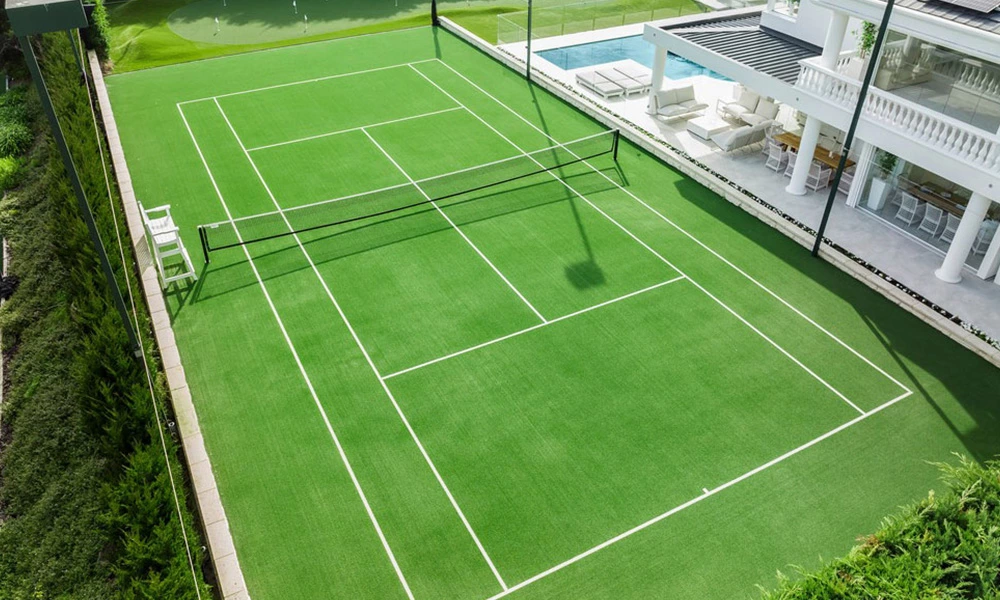
Would you choose an artificial grass tennis court?
You can choose our UNIGRASS tennis grass artificial turf (15mm 52500 density) with the following advantages:
Durability and stability
Using pure PE material, it provides extremely high UV stability, adapts to various climate conditions, and maintains stable color and performance for a long time.
Excellent sports performance
The smooth surface and dense stitch design ensure compact appearance and optimal playability, suitable for beginners and experienced padel players.
Provides unique fiberization and monofilament structure to enhance the rebound effect and sports experience of the ball.
High-density design
52500 density and 9500Dtex index, pile height 13-15 mm, ensure the durability and professional touch of the turf.
Versatility
Applicable to a variety of application scenarios: tennis court, padel courts, hockey courts and multi-functional event venues to meet diverse needs.
Flexibility and customization
Provides a green and blue appearance, and can choose a roll size of 225 meters or 425 meters, supports length customization, and meets the requirements of different venue specifications.
Summary
With its high-quality materials, professional design and versatile applications, this turf is an ideal choice for improving field performance and durability, and is a cost-effective solution for padel and multi-purpose sports fields.
